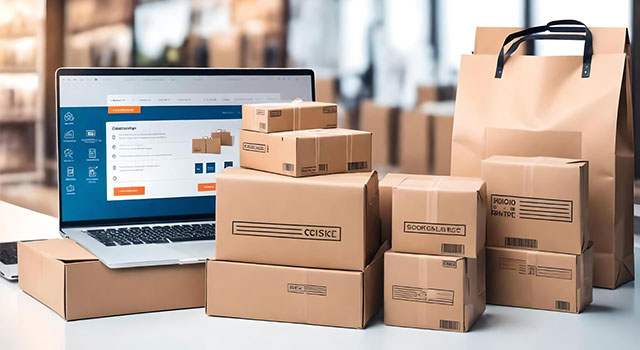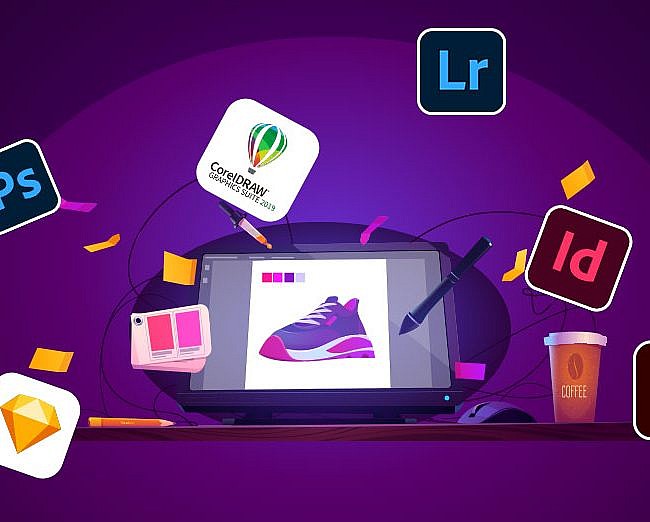In today’s digital age, e-commerce has transformed the way we shop, offering convenience and accessibility like never before. With the exponential growth of online retail, the packaging industry has witnessed a significant paradigm shift, giving rise to the crucial role of e-commerce packaging design. The global e-commerce packaging market is expected to exceed 62 billion U.S. dollars by the end of 2026.
With a click of a button, products are delivered straight to their doorsteps, eliminating the need for traditional brick-and-mortar experiences. This shift in consumer behavior has led to a surge in online sales and, consequently, a substantial increase in e-commerce packaging demand.
The e-commerce packaging industry has adapted to cater to this growing market, offering innovative solutions that protect the products and leave a lasting impression on customers.
From sustainable and eco-friendly packaging to personalized unboxing experiences, businesses leverage packaging design to enhance brand perception and customer satisfaction.
By understanding these challenges and adopting strategic solutions, companies can elevate their packaging game and pave the way for better sales, customer retention, and overall ROI in the competitive e-commerce landscape.
The Significance of E-Commerce Packaging Design
E-commerce packaging design plays a pivotal role in shaping the success of online businesses. In the digital realm, where physical touchpoints are limited, packaging becomes the tangible representation of a brand’s identity and values. It is not merely a vessel to transport products but a marketing tool to communicate with customers directly.
The unboxing experience is a critical moment in the customer journey, and well-designed packaging has the potential to evoke positive emotions and create lasting impressions. It can leave customers feeling excited, appreciated, and valued, thus fostering brand loyalty and repeat purchases.
Moreover, custom e-commerce packaging contributes to protecting and preserving products during transit. With the increasing complexity of supply chains and last-mile delivery challenges, robust packaging ensures that products reach customers in pristine condition, reducing the likelihood of returns and customer dissatisfaction.
Overcoming Key Challenges of E-Commerce Packaging Design
According to a report by White Bear Studio, 66% of consumers switch to new products because of packaging. Despite its undeniable importance, e-commerce packaging design comes with its fair share of challenges.
As businesses strive to make their mark in the competitive online landscape, they must be aware of and address these challenges to ensure a seamless and successful packaging experience. Some critical challenges of E-Commerce packaging design include:
- Sustainable Packaging
As consumers increasingly prioritize eco-friendly choices, e-commerce businesses face the challenge of adopting sustainable packaging without compromising product protection and brand appeal.
Sustainable materials may sometimes be more expensive, and finding the right balance between environmental responsibility and cost-effectiveness can be daunting.
Companies are responding to this trend by adopting sustainable materials, such as biodegradable and recyclable packaging, to align with consumer values and reduce their carbon footprint.
For instance, Puma’s remarkable initiative lies in introducing its “Clever Little Bag” concept. This innovative packaging has achieved a substantial 65 percent reduction in cardboard usage compared to its earlier red-box packaging.
- Personalization Complexity
While personalization enhances the unboxing experience, implementing it at scale can be complex and resource-intensive. Maintaining consistency across packaging graphic design and ensuring the timely delivery of personalized orders pose challenges for e-commerce companies.
- According to a study by Allied Market Research, one-fourth of retailers recognize the potential of embracing technologies that facilitate hyper-personalization. Custom e-commerce packaging ensures an above-average customer experience from checkout to unboxing.
- Optimizing Packaging Size
E-commerce businesses often struggle to balance using packaging that protects products adequately and minimizing the size to reduce shipping costs. Overly large packaging leads to wasted space and increased shipping expenses, affecting the environment and profitability.
For example, Amazon’s 2025 best-selling snack foods, most of the products have pack sizes that are significantly larger than their in-store counterparts. In sum, larger pack sizes for certain high-consumption items give consumers and manufacturers more advantages.
- Protecting Products in Transit
Ensuring the safe transit of products remains one of the most significant challenges in e-commerce packaging. Handling packages by multiple individuals and machines during transportation makes it difficult to protect delicate items from potential damage.
For online retailers, safeguarding products during transit is of utmost importance, as damaged goods can lead to returns, negative reviews, and a detrimental impact on the company’s reputation and financial performance.
Companies invest in robust materials like double-walled boxes and foam inserts to address this. Custom e-commerce packaging reduces movement. Implementing sensors, tracking devices, and predictive analytics helps monitor package conditions and take proactive measures to safeguard shipments.
- Minimizing Costs
Reducing shipping costs is crucial in the e-commerce industry, where shipping expenses can significantly impact company budgets. E-commerce packaging presents an opportunity to achieve cost savings.
To minimize shipping costs, companies opt for lighter and more compact packaging materials, reducing package weight and space utilization. Switching to lighter poly mailers from heavy corrugated boxes is one example of such a strategy.
Efficient packaging methods, like using void-fill materials such as air cushions or biodegradable peanuts, help optimize package size and space usage within shipping containers.
Outsourcing E-Commerce Package Design Can Be The Answer
Outsourcing packaging design services is a crucial strategy for conquering e-commerce packaging design challenges. Collaborating with experts like Artwork Abode (AWA) provides access to creativity and expertise, crafting visually appealing and functional designs that elevate the brand image.
Professionals focusing on sustainability guide businesses in adopting eco-friendly materials and practices. Customization for unique brand identities creates memorable unboxing experiences. Moreover, outsourcing eliminates in-house hiring and infrastructure costs, making it a cost-effective option for businesses of all sizes.
Conclusion
As the e-commerce industry continues its upward trajectory, the significance of packaging design cannot be underestimated. Meeting the challenges of e-commerce online packaging design is crucial for businesses aiming to thrive in this competitive landscape.
By investing in thoughtful and well-executed packaging design, e-commerce businesses can establish their brand presence, build customer loyalty, and ultimately drive success in the dynamic world of online retail.
Artwork Abode (AWA) is a leading DTP creative and packaging design service provider that assures lightning-fast turnaround and top-notch creative design without the overhead of in-house hiring.
Artwork Abode



